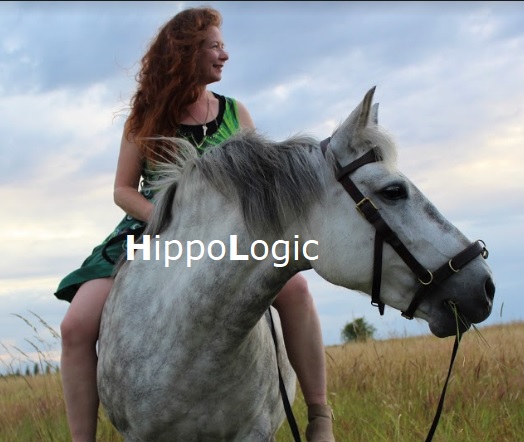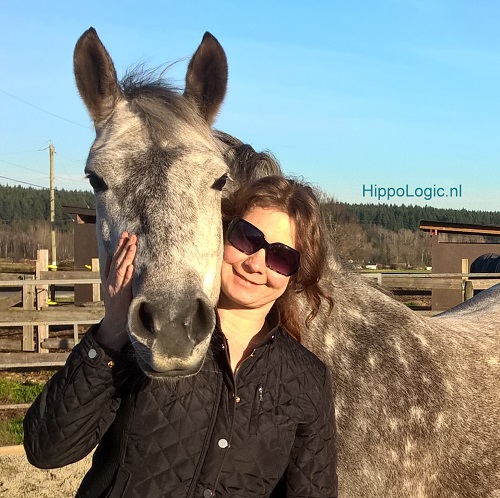
Do you think it’s impossible to teach your horse to relax? If you imagine it being like a “relax-button” that you simply have to press and your horse instantly relaxes like a ragdoll? No, not like that!
However, you can teach your horse to calm down and relax more, that he is in that moment that you need him to be relaxed! How? Training!
What is training
Training is teaching your horse to respond with a specific behaviours to a specific stimulus (cue). If you’ve trained ‘relaxation’ into a specific behaviour/context, you can recall that state of mind on cue.
We, horse people, do it all the time. Mostly the opposite of relaxation. Think of how most horses all respond and behave, just before breakfast. They are excited! They’re energetic and sometimes frenetic! That’s part of the behaviour that have been reinforced with a jackpot (their breakfast).
Reinforce calm behaviour
If you can excite them with food, you can calm them down with food. I have to say that before I used positive reinforcement I didn’t believe it could be done: teaching your horse to relax. On cue.
The only tool I had to calm down my pony was my voice. That’s what people told me to do. Oh, and to restrict his movement. How many times I’ve heard instructors shout: ‘Shorten your lead rope/reins/lung line!!’
When I was in a clinic with Shawna Karrash Kyra was very nervous, I was nervous and it was hard to calm myself down, let alone my horse. Shawna helped me to teach Kyra to calm down. That’s what we did for two days. I was looking forward to learn very advanced things and at first I was a bit disappointment we mainly focussed on calm and relaxed. I was looking forward to ride Kyra in this special occasion.
Key Lesson Patience promotes relaxation

Shortly after the clinic I moved Kyra to another property. It had a huge automatic metal gate at the driveway, which slides open with quite some noise and rattling sounds. It was there that most horses and dogs always spooked.
I decided to use my newly acquired relaxation skills to calm Kyra down when the gated opened and closed. I was glad I filmed the whole process because it only took 3 sessions to associate the rattling and moving of the gate with calmness!
It was then that the full potential of calming my horse really sank in! This was a powerful tool I now had, like a safety device!
Power of Key Lesson Mat training and Head lowering
Other examples are the self soothing power of mats (Key Lesson Mat Training) and Head lowering. I’ve seen that when clicker trained horses spook they often run to their mat. As if it’s a safety blanket. I’ve seen that they immediately calm down.
Key Lesson Head lowering also helps to calm your horse down and is an excellent way of measuring your horse’s state of mind. If he won’t lower his head, he’s might not be able to due to his state of mind.
Look what happens at 1:18 when Kyra spooks. Where’s she’s going! Now I use training deliberately to teach relaxation.
You can also help your horse to calm down by clicking and reinforcing calm behaviour and associate it with the object that scares them.
Watch these videos:
Kyra spooks at the giant ball
Kyra overcomes her fear for the mega ball (part II)
Fun and Games with the mega ball
4 Ways to use clicker training to teach your horse to relax
- Bridging and reinforcing calm behaviour
- Key Lesson Patience
- Key Lesson Mat training
- Key Lesson Head lowering
Join HippoLogic’s Facebook group
Become a member of our Happy Herd on Facebook and get access to my Facebook LIVE’s.



 If your horse goes ‘over threshold’ due to trigger stacking it means the horse can’t coop with the stimuli (the unfamiliar or new thing in the arena, the fact that he can’t investigate, that he is forced to approach it and so on) and he goes into flight (sometimes fight) response in order to release the tension.
If your horse goes ‘over threshold’ due to trigger stacking it means the horse can’t coop with the stimuli (the unfamiliar or new thing in the arena, the fact that he can’t investigate, that he is forced to approach it and so on) and he goes into flight (sometimes fight) response in order to release the tension.
You must be logged in to post a comment.